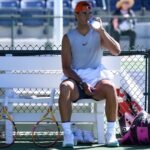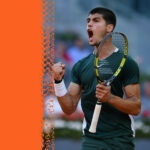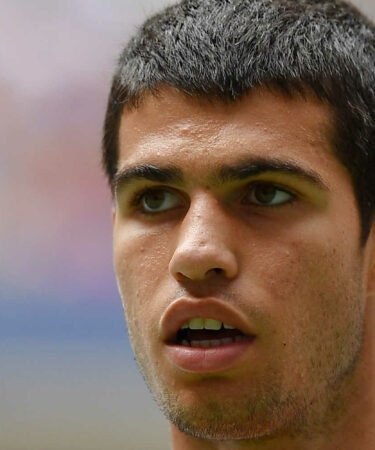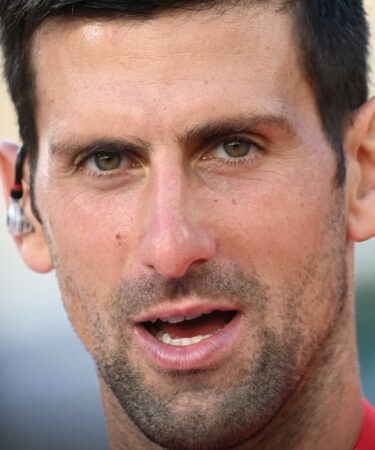To win Roland-Garros you need to be a five-set beast : what we know about them
Winning long, grueling battles of attrition is an artform that has been perfected by Nadal and Djokovic. Now Carlos Alcaraz is trying his hand.
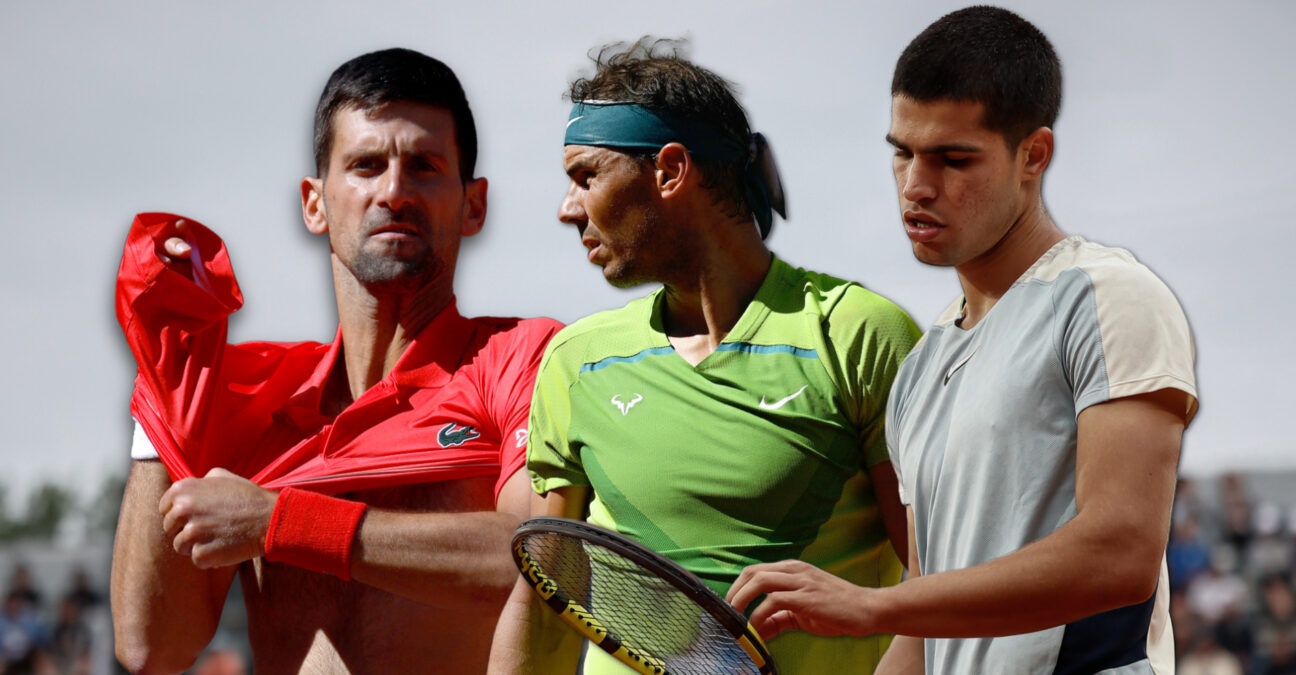 © Panoramic library
© Panoramic library
Best-of-five at the Grand Slams is an acquired taste. Normally it takes a fair bit of seasoning for pros – even the most talented ones – to deliver optimal results in such situations. At the Grand Slams, where the stakes are so high, and the legends of the game aim to peak at the right moments, the territory can be treacherous.
What we’ve decided to seek, now that Roland-Garros is approaching the second week, is a breakdown of Nadal, Djokovic and Alcaraz in the best-of-five format and extremely long matches in general. Alcaraz proved he could compete with the two legends on the best of three – the only question mark pending about his ability to repeat his Madrid’s performances on the biggest stage of clay.
Young players can’t play 5 sets that much anymore, Djokovic and Nadal did
Another factor working against young players is the fact that the sport is phasing out five-set competition. The format used to feature in all Davis Cup ties – now it does not. And it must be said that young players benefitted greatly from their experience in the format. Take, for example, Novak Djokovic. The Serb wasn’t just playing best-of-five at Grand Slams early in his career. He also played 16 Davis Cup matches in the best-of-five format before 2010, including matches against Nadal, Federer, Wawrinka, and Nikolay Davydenko.
Similar for Nadal, who played 15 in the Davis Cup’s best-of-five format before 2010.
With Roland-Garros in full swing Nadal and Djokovic are both vying for history in Paris, while young Carlos Alcaraz, considered by many a favourite to become the first teenager to win a major since Nadal in 2005, very much in the mix.
Now is a good opportunity to conduct a deep dive into Nadal and Djokovic’s history in the best-of-five format, deciding fifth sets and matches that stretch longer than three and a half hours. With Alcaraz’s sudden meteoric rise well underway, we’ve included his numbers as well. The 19-year-old has given us a small sample size but it could give us an indication of how his future in five-setters might play out.
So what did we learn? That the the best players get even better when physicality gets introduced to the equation. And that Carlos Alcaraz is starting to follow in the footsteps of Nadal in Djokovic. His relative inexperience leaves a relatively small sample size, but the alert has been sent.
How to gain experience in best-of-five?
With best-of-five format virtually done and dusted and Masters events no longer featuring best-of-five set finals, there is only one way for a young player to gain experience in these grinding types of matches. Experience must be gained at the Slams, and we have seen some players learn the hard way.
Take Daniil Medvedev, who lost his first six five-setters at the majors, and owns a 3-8 lifetime record. Or Andrey Rublev, who owns a lifetime record of 3-6 in Grand Slam five-setters.

And these young players must measure up against fine-tuned machines who have been there and done that.
After the first week of Roland-Garros, Nadal will have played 375 best-of-five format matches during his career. Djokovic, 407. Young Carlos Alcaraz’s body of work is much smaller: he has played 17 matches in the best-of-five format (11-5), all of them at the Grand Slams.
And yet, the rising Spaniard has proven to be up for the challenge. It isn’t that he is so talented – it could never be that simple. It is more a question of the Spaniard having some special qualities that most others don’t possess.
The physicality that Alcaraz possesses is rare among young players, and that physicality can be categorized not just as explosive, but durable. You have to have both to succeed in long, grueling matches that are contested over three and a half and sometimes five and a half hours.

Alcaraz has proven to be a fast learner. He won his first five-setter at a Slam, defeating Yasutaka Uchiyama at Wimbledon in the first round in 2021. Then, rather remarkably, he won his second (against Stefanos Tsitsipas at the US Open last year), and his third (against Peter Gojowczyk (again in the New York, in the next round).
It took Matteo Berrettini’s hot hand to defeat Alcaraz in a fifth set – the Italian did that earlier this year in a shootout tiebreak in the third round in Melbourne.
On Wednesay in Paris, Alcaraz demonstrated those special qualities again – he defeated Albert Ramos-Vinolas in a grinding match on Court Simonne-Mathieu, the final elapsed time on the clock four hours and 34 minutes.
Already the pattern has been set. Alcaraz isn’t just physically explosive, he is also able to grind.
Djokovic’s words tell the story
Though he has yet to face Alcaraz in a best-of-five set match, Djokovic would seemingly like the advantage it gave him. Having been around and adjusted to the myriad demands of the format, the World No.1 operates from a position of supreme confidence.
“I love playing the best of five sets, especially against the youngsters,” he said recently. “I think having been in the spotlight so many times helps me. Physically, I feel as fit as anyone else. So I can go the distance. In fact, I like to go all the way. The longer the match, the more I feel like I have no problem.”
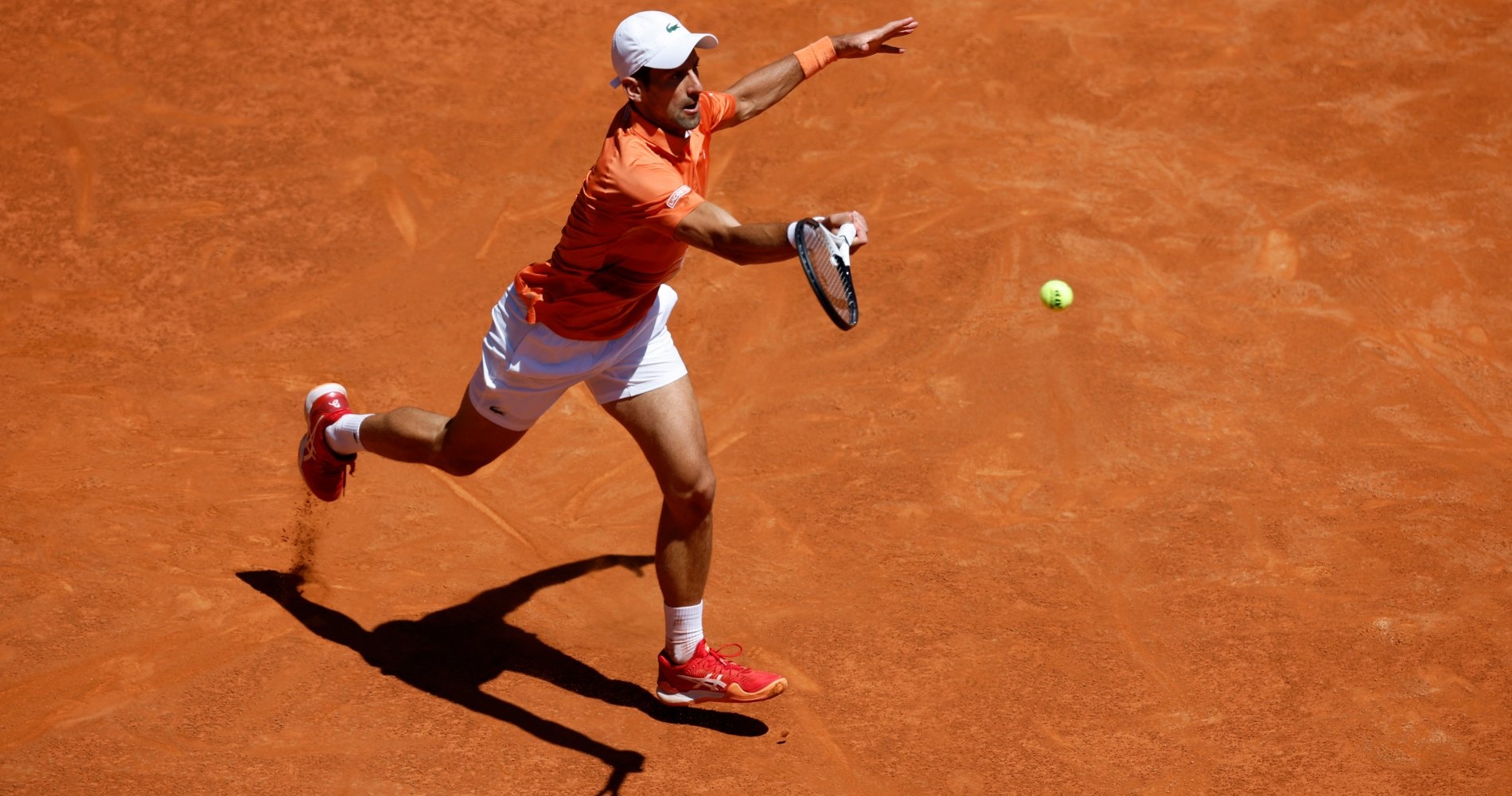
Nadal feels the same way about best-of-five
“I am totally against it in the Grand Slams,” Rafael Nadal said when asked whether best-of-three sets should be implemented at the Majors. As we have a day off between games, we must keep that fundamental part of the history of our sport.
“Playing five sets in the Grand Slams makes the difference because it makes all tennis players more physically and mentally demanding. It is something different.”

Against Alcaraz it could be different
Nadal and Djokovic might like their advantage in best-of-five matches against most players, particularly those that are young and inexperienced, but will they feel that same advantage against Alcaraz? It doesn’t seem likely.
Some young players just figure it out faster. Alexander Zverev is a good example. He has struggled in myriad ways to reach his potential on the tour, but in five-setters he has been rather stellar, putting up a 17-10 record in five-setters. Ah, but peel back the layers of the onion to find that Zverev lost six of his first eight five-setters.
Alcaraz has already proven to be ahead of the power curve, but he will have to continue to do it if he wants to go where he wants to go in the sport.
Nadal, who won nine of his first 11 deciding fifth sets, was a quick study also. Djokovic split his first six deciding fifth sets then reeled off 14 of his next 16. Players with supreme mentality, fitness and self-belief can dominate the realm.
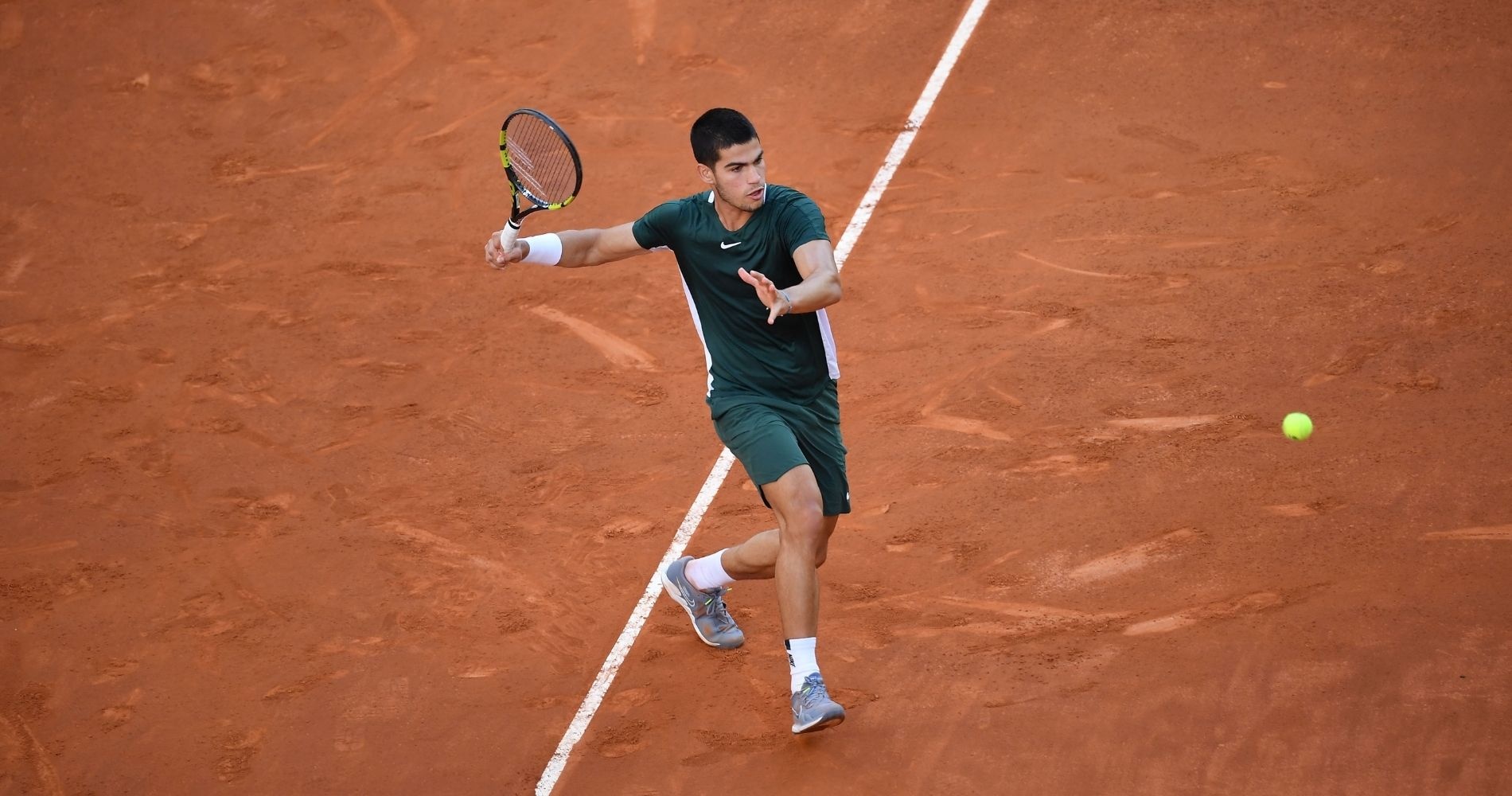
The longer the match, the bigger the edge
Five-set records tell us a lot, but they don’t give us the full picture. We pooled performance in longer matches to find out more, starting with records in matches that lasted three and a half hours or longer.
Here is how Djokovic, Nadal and Alcaraz shape up:
- Nadal matches of 3:30 or longer: 42-17 (was 30-7 at one point in his career)
- Nadal deciding fifth sets of 3:30 or longer: 20-12
- Djokovic matches of 3:30 or longer: 41-14 (Has won nine of last 10)
- Djokovic matches of 3:30 or longer in deciding five sets: 28-7
- Alcaraz matches of 3:30 or longer: 6-1
- Alcaraz deciding fifth sets of 3:30 or longer: 4-1
It is interesting to note that Djokovic has a slightly better winning percentage than Nadal, but the Serb is a much more reliable bet at this stage of their careers. Nadal has only won 12 of his last 22 matches of 3:30 or longer. Meanwhile, Alcaraz is clearly ahead of the game, just like Nadal and Djokovic were.
Nadal lost his first two matches over two and a half hours, but quickly got acclimated, and won the next ten; Djokovic suffered well-documented breathing and fitness issues early in his career, but they didn’t hold him back from winning his first ten matches greater than three hours and 30 minutes in length.
When we dig deeper and look at matches that lasted four hours or longer we see that the trio still excel. Nadal is 20-9; Djokovic is 19-5; Alcaraz, still so early in his career, is 3-1.
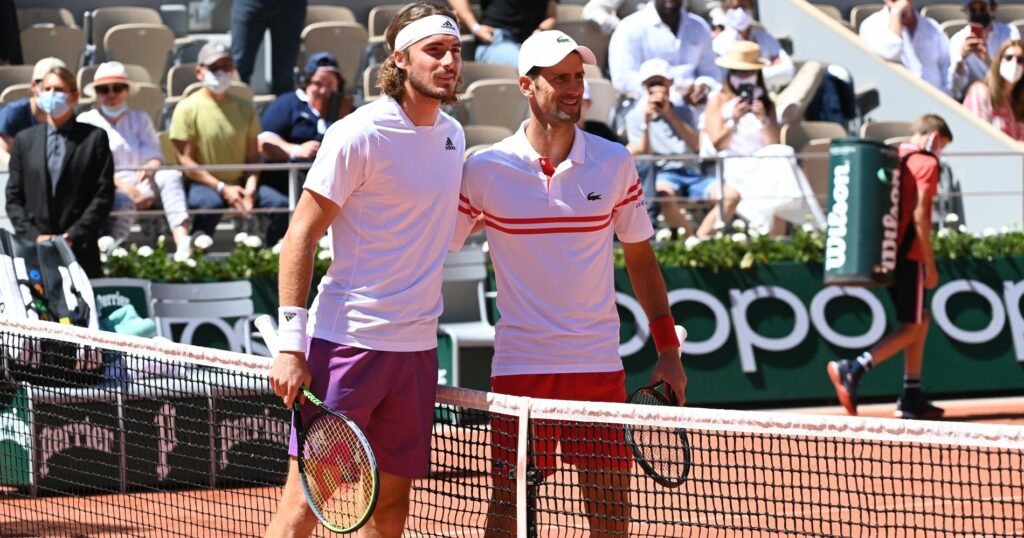
An if we look at the trio’s deciding fifth sets in Slams and against the top-10, we once again find that Djokovic is a cut above Nadal, with – of course – Alcaraz still to be determined:
- Alcaraz in five-setters at Slams: 3-1
- Alcaraz in five-setters at Slams v Top-10: 1-1
- Alcaraz in five-setters at Slams v Big 3: 0-0
- Nadal in five-setters at Slams: 21-12
- Nadal in five-setters at Slams v Top-10: 7-5
- Nadal in five-setters at Slams v Big 3: 3-4
- Djokovic in five-setters at Slams: 33-9
- Djokovic in five-setters at Slams v Top-10: 16-6
- Djokovic in five-setters at Slams v Big 3: 6-1
And finally, we can look at their winning percentage all-time in deciding sets (best-of-three or best-of-five) and fifth sets.
Djokovic ranks third all-time with a 72.4 winning percentage in deciding sets, Nadal is 7th at 69.3 percent. Alcaraz is 21-8 (72.4 percent).
Djokovic ranks 7th all-time with a 79.3 winning percentage in deciding fifth sets, Nadal ranks 51st at 64.9 percent. Alcaraz is currently 4-1 (80 percent), but it’s early days.
Now we settle in and see how the future plays out…






